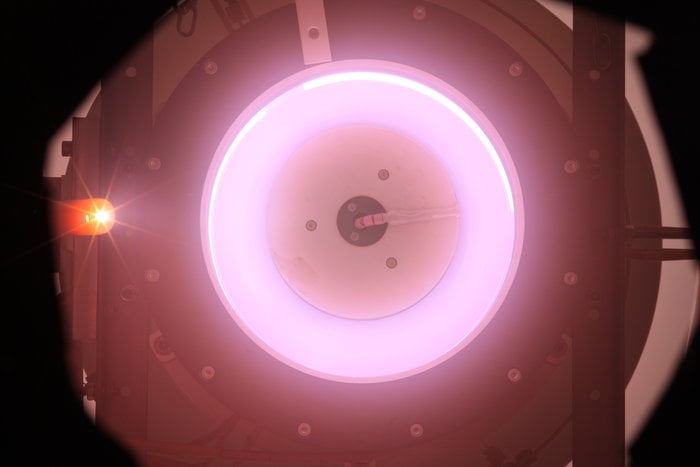ESA’s scientists are working on an ion thruster that would be powered by space air. The new thruster is under development and it could extend the lives of satellites orbiting Earth and possibly making space exploration missions longer. More importantly, the air-breathing thruster could pave its way towards the exploration of the Red Planet. Roscosmos, the Russian space agency, and the European Space Agency are planning to send up an exploration rover by 2020. It is going to explore Mars, and analyze its surface samples in search of extraterrestrial life.
The rover is likely to be carried by a Russian rocket from the Proton family. The rocket is estimated to travel for nine months until it reaches the Red Planet. Over the course of the mission, the ExoMars Trace Gas Orbiter will be establishing and maintaining communication between the rover and the control center located in Turin, Italy.
ESA hasn’t yet confirmed whether the air-breathing thruster would be a part of the mission. However, the newly developed technology could be a lot of help during the upcoming mission, providing power for both the rocket and the orbiter.
The team of the space agency test-fired the thruster on March 5. The test was a success. The air-breathing thruster could fuel itself with the carbon dioxide that is present in the atmosphere of the Red Planet. The thruster will successfully operate with the satellites located in low-orbit of Earth, extending their lives for many years.
“This project began with a novel design to scoop up air molecules as propellant from the top of Earth’s atmosphere at around 200 km altitude with a typical speed of 7.8 km/s,” Louis Walpot, an aerospace engineer at ESA in Paris, France said on ESA’s website.
The private space company SITAEL worked on an entire prototype and developed it, after which it tested it in a vacuum chamber in Italy. The chamber is supposed to mimic the environment of a 200-kilometer altitude.
The rapid development of technology created a “working concept” out of the air-breathing thruster, rather than it working just in theory, making it an entirely “new class” of future space exploration missions.
The European Space Agency hasn’t yet announced the date of when the thruster will be developed for use in real-time. However, the space agency is working on its fourth medium-class mission, expected to launch in 2028.
The mission is called ARIEL, which stands for Atmospheric Remote-sensing Infrared Exoplanet Large-survey. The mission will look into data from different space telescopes and analyze it in order to search for extraterrestrial life, as well as hoping to also understand their origin and geographical structure.
“Ariel is a logical next step in exoplanet science, allowing us to progress on key science questions regarding their formation and evolution, while also helping us to understand Earth’s place in the Universe,” ESA Director of Science Günther Hasinger said on ESA’s website.
The mission will aim to focus on warm and hot planets. That also includes different super-Earths discovered in different star systems. Gas giants that orbit close to their parent stars will also be analyzed to see whether some star systems are capable of harboring life.





